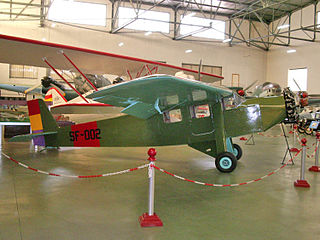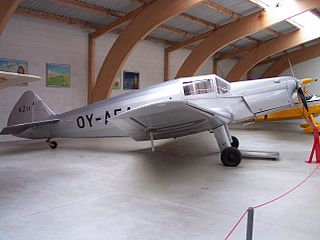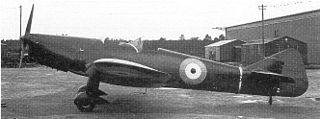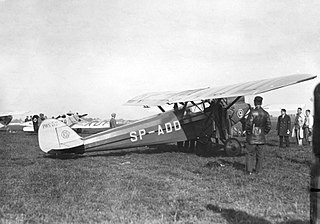The IAR 14 is a Romanian low-wing monoplane fighter-trainer aircraft designed before World War II.

The Farman F 400 was a 1930s French three-seat cabin high-winged monoplane which was designed and built by Farman.

The Heston Type 1 Phoenix was a 1930s British single-engined five-seat light transport monoplane built by the Heston Aircraft Company Limited.

The ICAR Universal was a 1930s Romanian two seat monoplane trainer, touring and aerobatics aircraft.
The IAR-821 was an agricultural aircraft built in Romania in the 1960s. It was a conventional low-wing monoplane with fixed, tailwheel undercarriage.

The Koolhoven F.K.48 was an airliner built in the Netherlands in 1934 for KLM.

The SAI KZ II was a sport aircraft built in Denmark in 1937, produced in three major versions before and after the Second World War.
The IAR 15 was a low-wing monoplane fighter designed in Romania in 1933.

The Miles M.15 was a 1930s British single-engined monoplane trainer aircraft with two open cockpits, designed and developed by Miles Aircraft. Like other aircraft constructed to the official specification, it failed to meet the performance requirements, and only two were built.

The Miles M.13 Hobby was a small low-winged monoplane built for racing and research in the United Kingdom just before World War II. A single engined single seater, it ended its days in the wind tunnel at the R.A.E.

The Comper Streak was a single-engined, single-seat racing monoplane built in the UK in the mid-1930s. It was not successful as a racer and only one was produced.
The Koolhoven F.K.57 was a twin-engined, gull-winged monoplane built in the Netherlands as a personal transport for the Director General of Royal Dutch Shell. Only one was made, flying chiefly in Europe in the year before World War II, but destroyed when Germany invaded the Netherlands in May 1940.

The PWS-52 was a Polish sports aircraft of 1930, a single-engine high-wing monoplane, constructed by the Podlaska Wytwórnia Samolotów (PWS), that remained a prototype.

The CASA III was a 1920s Spanish two-seat monoplane, designed by Luis Sousa Peco and built by Construcciones Aeronáuticas SA (CASA) at Getafe near Madrid.

The Bernard 200 T was the first of a series of French light touring aircraft from the early 1930s. Single engined and seating three or four, they were high cantilever wing monoplanes. Four Bernard 200 T were built and subsequently modified into three further variants.
The Caproni Sauro-1, or Caproni Tricap, was a light, single-engine cantilever monoplane, seating two in tandem, built in Italy in the early 1930s for touring. Despite good performance and favourable test reports, only one was built.

The Pander P-1 and P-2 were close to-identical single engine Dutch sports aircraft with tandem seats and a parasol wing, first flying in 1929. Only two were built.

TheYakovlev AIR-9 / AIR-9bis was a 2-seat sport aircraft designed and built in the USSR during the early 1930s.
The WT-1 was a 1931 high performance sports aircraft designed in Poland. It only made two flights.
The IAR-817 was a Romanian multipurpose aircraft built in the 1950s.













